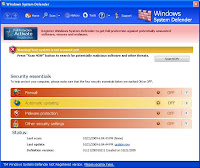 Microsoft System Image Manager is the tool you use to build and assemble Windows 7 answer files. You can assemble features, packages, and answer file settings. Windows Setup uses Unattend.xml to assemble and customize the default Windows 7 installation for all conformation passes. For instance, you can assemble Internet Explorer, assemble Windows Firewall, and define the hard drive configuration. You can use Windows System Image Manager to assemble Windows 7 in several ways, including the following:
Microsoft System Image Manager is the tool you use to build and assemble Windows 7 answer files. You can assemble features, packages, and answer file settings. Windows Setup uses Unattend.xml to assemble and customize the default Windows 7 installation for all conformation passes. For instance, you can assemble Internet Explorer, assemble Windows Firewall, and define the hard drive configuration. You can use Windows System Image Manager to assemble Windows 7 in several ways, including the following:Advantages of Windows System Image Manager :-
Install third-party applications while installation. Customize Windows 7 by building answer files. Employ language packs, service packs, and updates to an image while windows 7 installation. Add device drivers to an image while installation. With versions of Windows previous than Windows Vista, you had to modify answer file settings manually using a text editor, even after initially building an answer file by using Windows Setup Manager. The Windows 7 answer file depends on XML and is far too composite to modify manually. So you must use Windows System Image Manager to modify Windows 7 answer files.
In another development, Windows Setup (Setup.exe) is the program that installs Windows 7. It uses image-based setup (IBS) to give a single, interconnected process with which all customers can install Windows. Image-based setup does clean installations and upgrades of Windows. Windows Setup and image-based setup permits you to prepare Windows 7 in your firm easily and cost effectively. Windows Setup comprises of many new features that help installations that are faster and more logical than Windows XP, including the following:
Enhanced image management using Windows System Image Manager :-
Windows 7 images are saved in a single .wim file. A .wim file can save many instances of the operating system in a single, highly compressed file. The install file, Install.wim, is positioned in the Sources folder on the new Windows 7 media. Streamlined installation - Windows Setup is optimized to enable the deployment assumptions used by most firms. Installation takes less time and gives a more uniform configuration and deployment process, resulting in less deployment costs.
Faster installations and upgrades using Windows System Image Manager :-
Because Windows Setup is now image based, installing and promoting Windows 7 is faster and easier. You can do clean installations of Windows 7 by deploying the Windows image to destination computers, you do promotions by installing a new image on an existing installation of Windows. Windows Setup saves the former Windows settings while the installation. Windows Setup amends the installation experience over Windows Vista. For example, Windows Setup moves the license key to the Windows Welcome page, providing users to type a product key after completing installation. Windows Setup also automatically builds a small, hidden partition for BitLocker Drive Encryption. This makes it easier to enable BitLocker Drive Encryption later, because users don’t have to prepare the drive. Additionally, the final stage of Windows Setup, Windows Welcome, is faster and gives more feedback on the progress of the setup process.
In another development, the new Windows 7 distribution media includes some of these tools, including Sysprep, DISM, and other command-line tool, but they aren’t on the media in a separate file such as Deploy.cab. The Windows AIK 2.0 includes the bigger tools, such as Windows SIM, Windows PE, and ImageX. These are the basic tools needed to build, customize, and prepare Windows 7 images.
No comments:
Post a Comment